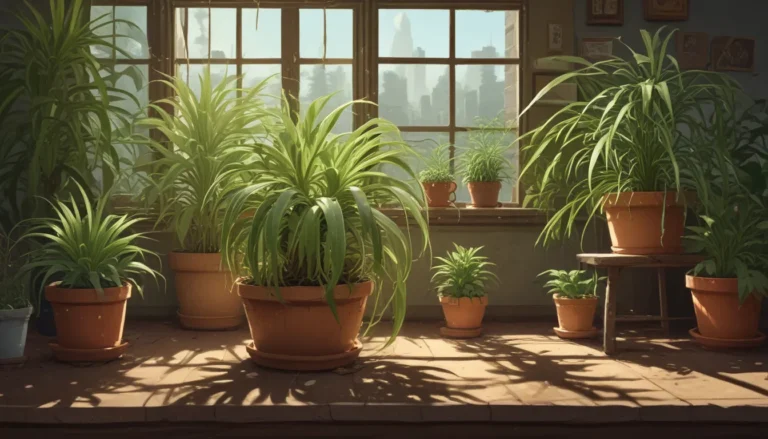Delving into the Wonderful World of Petunia Plants

If you’re a plant enthusiast who loves to add a dash of variety to your garden, then petunias are the perfect flowers for you. The Petunia genus boasts a stunning array of bloom colors, ranging from pink and red to purple and white, along with bicolors, picotees, and blooms that resemble a starry night sky.
But the allure of petunias doesn’t stop at their captivating hues and patterns. These ornamental flowers come in various categories, each distinguished by unique growth habits and flower characteristics. From extra-large double blooms to sprawling varieties that can cover bald spots in your landscape, petunias have something for every gardener.
While petunias are known for their long blooming period and easy care, it’s worth exploring the different types within the genus to uncover their hidden advantages. By understanding the distinctive traits of each petunia group, you can find the perfect match for every corner of your garden or landscape.
Let’s take a deep dive into the five unique categories of petunias that can elevate your gardening experience.
What You’ll Learn
- Understanding the Five Types of Petunia Plants
- Grandiflora
- Multiflora
- Floribunda
- Milliflora
- Trailing or Ground Cover
- Tips for Choosing Petunias to Grow at Home
Understanding the Five Types of Petunia Plants
Native to South America, petunias boast trumpet-shaped blooms in a stunning array of colors. With 35 known species, these hybrids are commonly found in home gardens outside of Zones 9 to 11, where they thrive as annuals.
While all petunias share traits like a long blooming period, colorful trumpet-shaped flowers, and an affinity for pollinators, the genus offers a diverse range of varieties that cater to different preferences.
The following five categories organize petunias based on their growth habits and flower sizes, providing a roadmap to help you choose the ideal petunia type for your gardening needs.
1. Grandiflora
If you’re a fan of big, showy blooms in vibrant colors, grandifloras are the perfect pick for you. These varieties flaunt large, eye-catching blossoms, generally measuring three to five inches across.
Despite offering fewer flowers compared to other types, grandifloras compensate with their impressive size. Growing between 15 to 24 inches tall with a spreading capacity of up to 36 inches, these plants add a touch of grandeur to your garden.
Consider cascading grandiflora varieties like those from the Cascade or Super Cascade series for a flourish of color that spills gracefully over containers or hanging baskets. You may also encounter pendula-type petunias that feature long, trailing stems, perfect for adding a cascading effect to your garden.
If you prefer a more compact option, the Limbo series offers dwarf grandiflora cultivars that grow just four to eight inches tall while maintaining a lush appearance. For a balance of size and blooming capacity, explore the Flash Sweetunia series, which combines compact growth with abundant blooms.
While grandifloras boast ruffled or fringed blooms like those in the Daddy series, they do have a weakness for heavy rain and humidity, making them susceptible to rot. Regular deadheading is essential to keep these blooms looking their best.
Best Uses: Containers, specimen plants, hanging planters
Recommended Series: Aladdin, Amore, Aphrodite, Avalanche, Cascade, Cascadias, Constellation, Daddy, Diamond, Dreams, EZ Rider, Explorer, Falcon, Famous Laser, Fanfare, Flash Sweetunia, Frost, Go!Tunia, Limbo, Hulahoop, Magic, Mistral, Pacta Parade, Sophistica, Storm, Success! 360°, Super Cascade, Supermagic, Surfinia, TriTunia, Trumpet, Ultra, Viva
Top Pick for Your Garden: Spellbound ’Dark Purple’
2. Multiflora
For a profusion of flowers in a compact package, multifloras are the go-to choice. These varieties produce smaller blooms, usually two inches wide, on more diminutive plants that grow about 10 to 12 inches tall.
Multifloras are excellent self-cleaners, meaning their spent blooms drop off naturally without requiring deadheading. This feature makes them ideal for large plantings that demand minimal maintenance. Look out for options like the Mambo series if you prefer a dwarf selection.
Dating back to the 1950s, multifloras offer a broad color palette and faster growth compared to grandifloras. Whether you opt for single or double blooms, these versatile cultivars are well-suited to garden beds and mass plantings.
Best Uses: Mass plantings, garden beds
Recommended Series: Carpet, Dot Star, Easy Wave, Espresso, Good and Plenty, Hurrah, Mambo, Mirage, Pearls, Primetime, Tidal Wave
Top Pick for the Garden: Mixed collection of unnamed multiflora petunias
3. Floribunda
Blurring the line between grandifloras and multifloras, floribundas offer the best of both worlds. These hybrids showcase large blooms, superior rain resistance, and enhanced disease resistance compared to their counterparts.
With an average height of eight to 15 inches, floribundas spread 10 to 12 inches wide, making them a versatile choice for borders, containers, and garden beds. While they don’t self-clean like multifloras, floribundas reward gardeners with an impressive color range and beautiful blooms.
Best Uses: Borders, containers, garden beds
Recommended Series: Celebrity, Double Madness, Double Wave, Freedom, Frillytunia, Horizon, Pretty Flora, Prism, Madness, Merlin, Wave
Top Pick for the Garden: Madness ‘Red Picotee’
4. Milliflora
The ultimate choice for small-space gardens, millifloras are miniature petunias that pack a punch with abundant tiny blooms. Though their flowers are petite, usually only one to one and a half inches in diameter, these plants compensate with continuous flowering throughout the season.
Well-suited for containers and edging flower beds, millifloras boast a compact mounding habit, growing just eight inches tall and wide on average. Their self-cleaning nature eliminates the need for deadheading, making them a hassle-free addition to your garden.
Best Uses: Containers, edging flower beds
Recommended Series: Fantasy, FlashForward, Picobella, Shock Wave, Tiny Tunia, Vivini
Top Pick for the Garden: Picobella ‘Carmine’
5. Trailing or Ground Cover
If you need a vigorous grower that can cover large areas with ease, look no further than trailing or ground cover petunias. These series and cultivars spread rapidly, covering 10 square feet of garden beds or borders per plant in a single season while standing at just four to six inches in height.
Requiring minimal deadheading and boasting impressive heat and drought tolerance, trailing petunias are ideal for hanging baskets, borders, and mass plantings. Their creeping growth habit makes them perfect for spilling over containers or adorning hard-to-reach spots in your landscape.
Best Uses: Hanging baskets, ground cover, mass plantings
Recommended Series: Blanket, Double Blanket, Hang Out, Supertunia, Tidal Wave, Velvet
Top Pick for the Garden: Supertunia ‘Priscilla’
Tips for Choosing Petunias to Grow at Home
Selecting the right petunia type for your garden involves more than just choosing based on color or appearance. Consider the following tips to ensure you make an informed decision based on your design preferences and gardening needs:
-
Consider Deadheading Requirements: Grandifloras and floribundas usually require deadheading to maintain their appearance. Opt for self-cleaning varieties like multifloras, millifloras, or ground cover types if you prefer less maintenance.
-
Assess Watering Needs: Container-grown petunias necessitate more frequent watering, especially in hot summer temperatures. Choose a variety that suits your watering schedule, whether it’s a drought-tolerant ground cover or a compact multiflora.
-
Match Planting Location: If you’re growing in raised beds or garden plots, opt for versatile multiflora cultivars that can benefit from improved water retention and irrigation systems. Choose a variety suited to containers if space is a constraint.
-
Avoid Availability Hassles: Check local availability before falling in love with a specific variety, whether for bedding plants or seeds. Ensure you select a plant that’s easily accessible to save yourself from potential procurement headaches.
-
Plan for Propagation: If you’re considering growing from seed, be aware of the lead time required for successful indoor seeding. Some cultivars do not grow true from seed, so make an informed decision based on your propagation preferences.
By following these tips, you can confidently choose the perfect petunia type that complements your garden design and caters to your gardening routine.
A Five-Way Tie for the Top Petunia Type
As you delve deeper into the fascinating world of petunias, you’ll discover a myriad of options that tempt you to grow them all. I began my journey with multiflora varieties in my childhood garden, graduated to Wave series ground cover options, and now enjoy grandifloras with veined, ruffled blooms.
What about you – do you have a favorite petunia type, or are you seeking expert guidance to make the perfect selection? Share your thoughts in the comments below and join the conversation!
And if you found this guide informative, don’t miss out on our other petunia articles that delve into the world of these vibrant blooms. From pest management to winter care, our guides offer expert advice to elevate your petunia gardening experience.
In conclusion, petunias are a wonderful addition to any garden, boasting a wide range of colors, shapes, and sizes to suit every gardener’s preferences. Understanding the various types of petunias can help you make an informed decision when selecting the perfect variety for your garden. So, go ahead and explore the delightful world of petunias – you might just be surprised by the beauty they add to your outdoor space!





